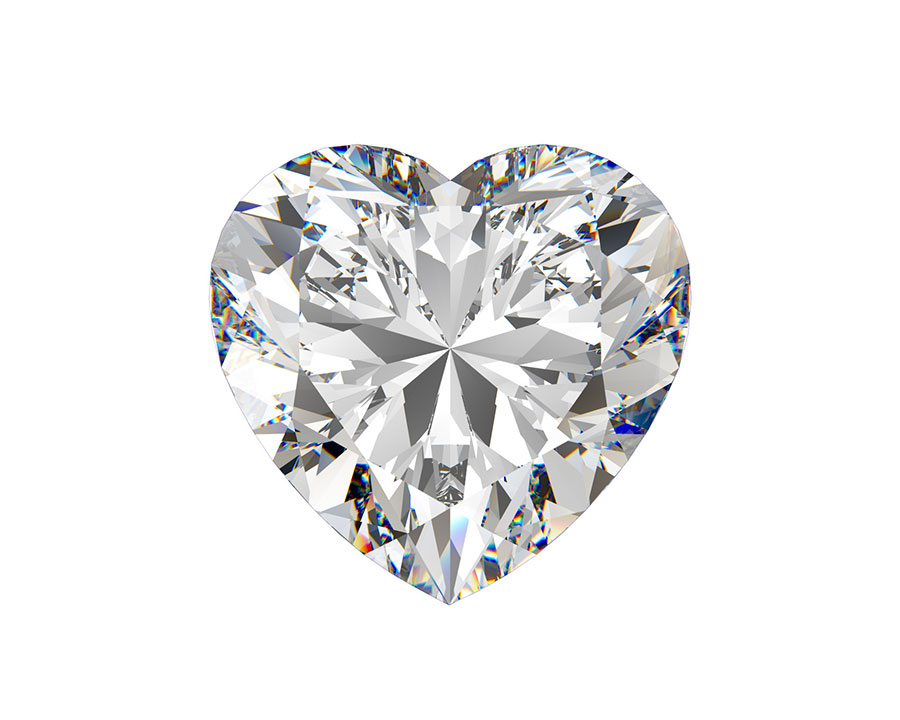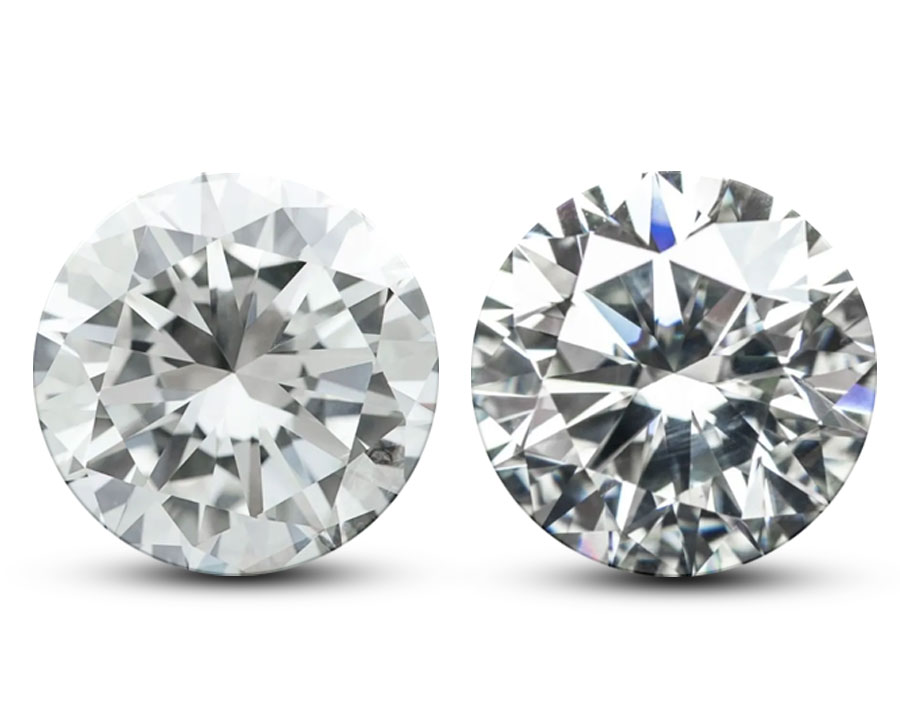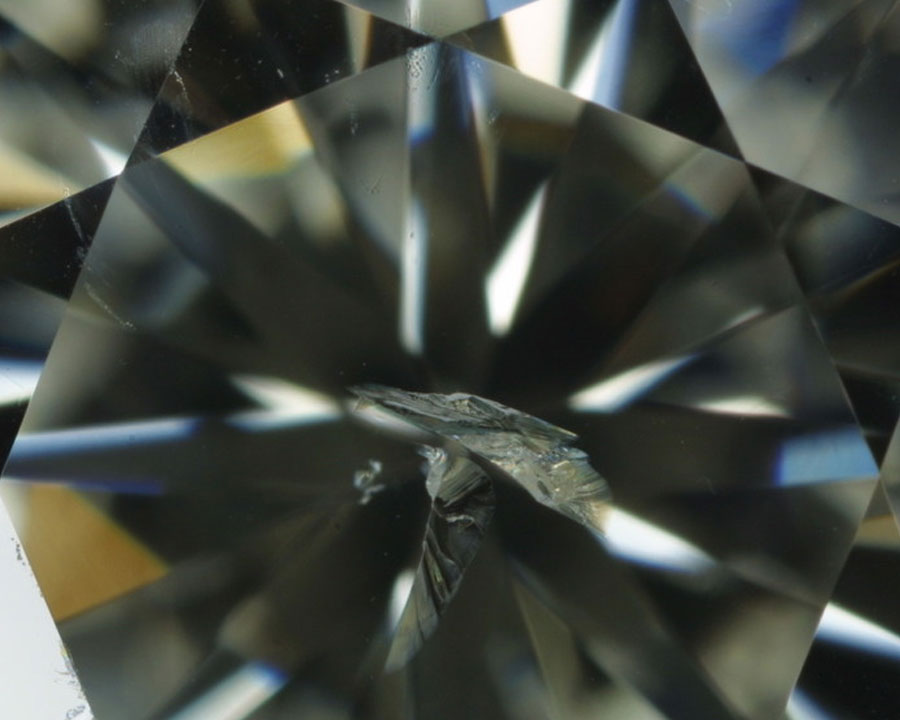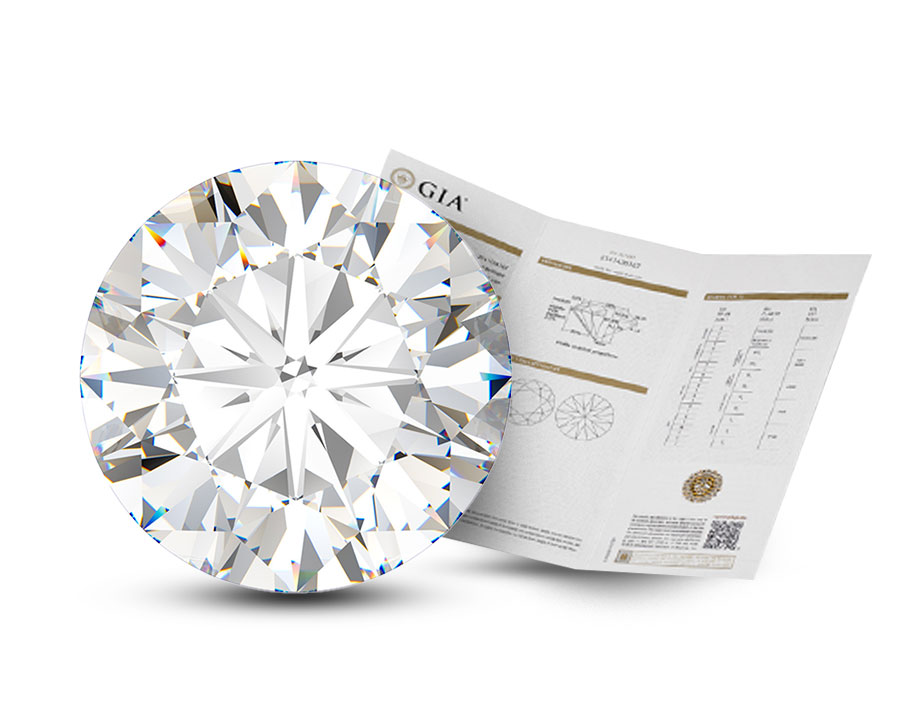How to tell if diamonds are real
Identifying real diamonds can be tricky, especially if you don't have the necessary knowledge and experience. There are several stones that can be used as diamond substitutes. Some of them may look very similar to real diamonds, while others may look different.

Diamond substitudes
1. Cubic zirconia (CZ) is a synthetic stone, has high refractive power, brilliance and diamond-like hardness. Zirconia can be dyed in a variety of colors including white, yellow, pink and blue.
2. Moissanite is a mineral that was first discovered in a meteorite and is one of the hardest materials on Earth, has a high refractive index and diamond-like brilliance, but it does not have the same clarity and color.
3. White topaz is a transparent mineral that has a low refractive index and brilliance, but can be similar in size and cut to a diamond.
4. Synthetic Manifesto is a stone that is created in a laboratory to mimic the appearance of a diamond, has high brilliance and refractive index, but may vary in weight, clarity, and color.
5. Whiteness is a stone that is created from glass or plastic, can look very similar to a diamond, but does not have the same hardness and strength.
There are several ways to help you verify the authenticity of a gemstone. Let's take a look at a few methods you can use to identify real diamonds.

How to know if a diamond is genuine
1. Definition by weight and size
Diamonds have a high density and weight, so a real gemstone will weigh more than its fake glass or quartz. A real diamond also has a characteristic brilliance that cannot be achieved by other stones. You can measure the weight, size and compare it with those on the certificate issued by the diamond grading laboratory.
2. Using a magnifying glass
You can use a magnifying glass or a microscope to examine and determine its authenticity. A real diamond has a characteristic pattern known as a "crystal lattice" that is displayed on the surface. In addition, a real diamond has sharply honed edges and corners that reflect light and create brilliance. If you see any imperfections or blemishes on the surface, this may be a sign of a fake.

3. Hardness test
Diamond is one of the hardest materials and can leave marks on other gemstones or metals. You can use a special hardness tester. If a diamond leaves a mark on the glass, this does not guarantee that it is real, but if other scratches remain on the mark, this may be a sign of a fake.
4. Use of special equipment
There is special equipment that can determine the authenticity of a gemstone. For example, using a spectrometer, you can study the spectrum of light that a diamond emits and determine its chemical composition. This method allows you to distinguish real diamonds from other stones that can be used for fakes.

5. Checking the certificate
If you are buying a diamond from a store or retailer that provides a certificate, make sure the certificate was issued by an independent gem grading lab. The certificate must contain information about the quality of the diamond, including its size, weight, clarity, color and cut. If the seller is unable to provide a certificate or it looks suspicious, this may be a sign that the stone may be fake.
While these methods can help you determine authenticity, they are not 100% reliable. If you are unsure about the authenticity of a gemstone, contact a professional who can perform additional tests.
If you want to buy diamond jewelry, then Kantor Jewelry will be happy to help you find the best diamond and create a unique jewelry piece with a custom design. Kantor Jewelry works only with natural diamonds. We don't buy stones wholesale, we look for the best, most beautiful and profitable personal option for our clients. Our team seeks out special stones for your request until you are satisfied.
Kantor Jewelry will help you to find the best setting option for your stone so it can please you with its beauty for many years as a part of a unique jewelry piece that will be passed from generation to generation.
























































